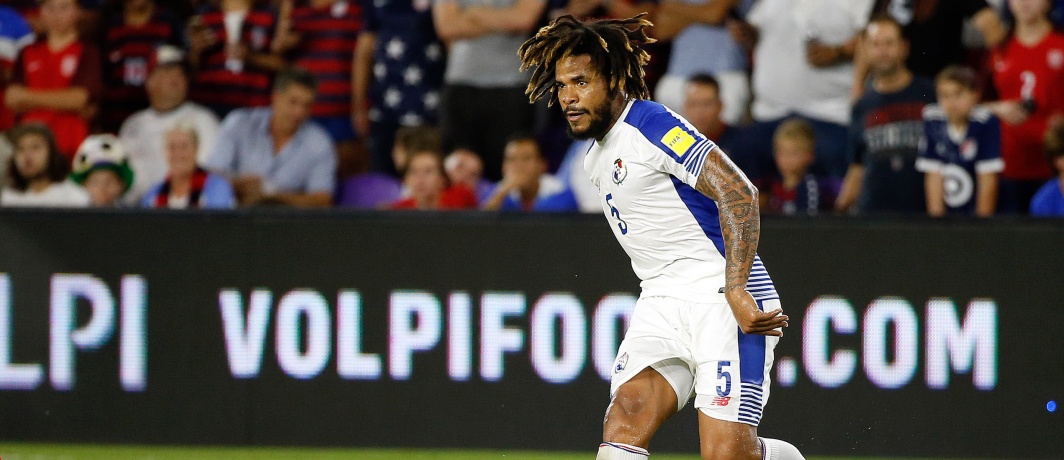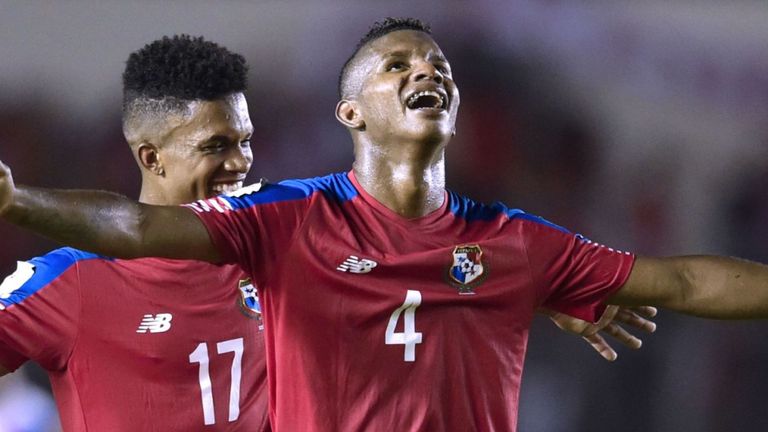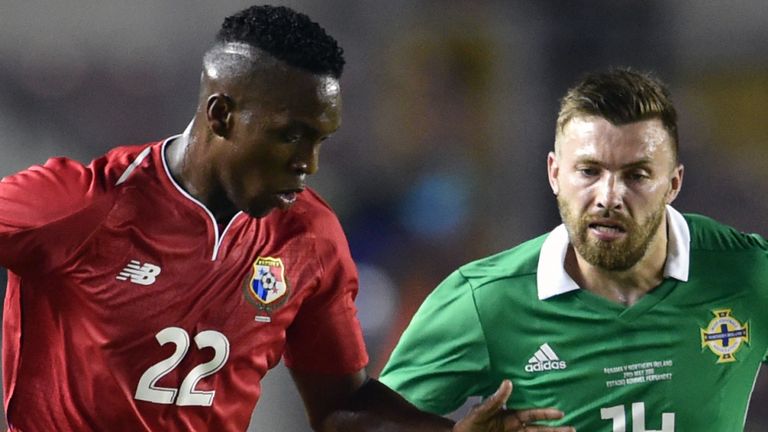Panama have fulfilled their dreams by reaching their first World Cup. James Walker-Roberts speaks to Gary Stempel, a key figure in Panama’s footballing history, about how the journey started, how it has evolved, and why the country could “shut down” during the World Cup…
It’s two weeks before Panama play their first-ever World Cup match.
When Panama qualified for the tournament with a 2-1 win over Costa Rica in October, president Juan Carlos Varela signed a late-night decree to make the following day a public holiday, shutting schools and giving workers the day off.
He has thought about doing the same again, this time for all three of Panama’s Group G matches, but has decided against it. Instead, he has called on businesses to be “creative” to allow workers to watch the games.
“The important thing is that all Panamanians can see the three matches, and hopefully more than three matches, without affecting the economic and social development of the country,” he added.
It’s all quite different to when Gary Stempel landed in Panama in 1996.
Stempel – who says the country is “basically paralysed” by the excitement around the World Cup – was born in Panama to a British mother and Panamanian father, but moved to London when he was five.
He became involved in football by helping set up a community programme with Millwall and working as an outreach officer while studying for his coaching badges. With experience of grass-roots football under his wings, Stempel returned to Panama in the mid-90’s with his wife and two kids – “it seemed like a really exciting time. It seemed like an adventure”.
Having left England in the year of Euro 1996 – the year of Three Lions and ‘football coming home’ – Stempel was in for a different experience in Panama, where major tournaments and World Cups were a distant dream and football was behind baseball and boxing in terms of national focus.
“It was very primitive,” he explains to Sky Sports.
“When I was coaching there were no nets at training, I’d have to bring my own balls, there were no bibs, we would use a bucket of water from the church next door to drink from. Players would have to make their own way to training with help from aunts, uncles, mums, to get 25p to go to training because they weren’t supported at all.
“You would play on baseball pitches converted into football pitches so you would have the mound in the middle of the pitch. Then you would have sandy patches in corners. Those were the kind of conditions you would work with. Some league games were played on gravel.”
As well as his role with Panama Viejo, Stempel helped out with Panama youth teams, ran soccer schools, got involved in projects, UNICEF and worked with gangs and young offenders as he had done in England – “Millwall in the 80’s and 90’s pretty much set you up for anything in life,” he says with a smile.
Stempel’s work in the late 90’s and 2000’s would help pave the way for future Panama success. Not only did Stempel make strides at club level, but in 2003 he took the Panama Under-20 team to the World Cup – the first time a Panamanian side had participated in a worldwide tournament. That was followed in 2009 by winning the Central American Nations Cup with the senior Panama team and then reaching the quarter-finals of the Gold Cup.
Several of the players who featured in the 2009 Gold Cup quarter-final defeat to USA are part of the squad that will travel to Russia this summer. Goalkeeper Jamie Penedo, defender Roman Torres, midfielder Gabriel Gomez and striker Blas Perez all now have over 100 international caps under their belts and form part of Panama’s ‘golden generation’.
“This was their last chance and they knew it,” says Stempel, who now works as Panama’s Under-17s coach.
“One of the reasons I am glad they have qualified is that these ‘older’ players were called the golden generation. They are great players who have had fantastic careers inside and outside of Panama, but this one group have found themselves playing for Panama and they have kept failing to make the World Cup.
“Now they have made it, which I am really glad because it would have been a real shame if they weren’t remembered for their talent and how good they were.”
Could there be a concern that Panama’s squad is too experienced and doesn’t contain enough young players?
“I don’t think so,” says Stempel. “Panama needs an experienced squad for their first World Cup. They need strong heads and players who have had a few years playing abroad.
“It’s not a worry. Panama doesn’t look to the future. They just deal with the present, a bit like their day-to-day lives, you just survive day to day. It’s the same with the World Cup.”
Stempel has certainly played his part in Panama’s journey to the World Cup.
Panama sports channel Cable Onda Sports say Stempel’s name is “written in golden letters in the archives of national football, not only for what was done with the national teams, but also for what he has done in the domestic league”.
What he has done, as well as the success on the pitch, is help take players like Torres “from the streets” and nurture and develop them.
“The satisfaction comes from seeing these guys, many of who are from humble backgrounds, change their lives for the better,” Stempel told FIFA in an interview in 2009. “Football’s not always about trophies and medal value, sometimes it’s about human value.”
Human value was unfortunately at the fore last year when one of Stempel’s former players, Amilcar Henriquez, was killed in a drive-by shooting. Henriquez had made 75 appearances for Panama at the time of his death and would have likely been part of the squad at this summer’s World Cup. He scored the winning penalty when Stempel’s Panama side beat Costa Rica to win the Central American Nations Cup in 2009.

“I have fond memories of him as a person and a player,” says Stempel. “And for scoring that goal and bringing back a very important achievement to Panama, he has a very special place in my heart. I was very hurt and still am by the loss of a great person and player.
“He had a very special bond with the players, they have had little messages on t-shirts they wear under the shirts to him. They have all remembered him and spoken about how he should be there. He is fondly remembered.”
Henriquez would no doubt have been among players’ thoughts as Panama were given a celebratory send-off by their fans before, during and after a 0-0 draw with Northern Ireland in Panama City last week. They now face Norway before heading to their first World Cup, having tried to qualify since Argentina 1978.
“It was their dream,” says Stempel. “That’s why I am very happy because you see the sacrifices the players and their families have made. They are very poor people and the fact they have made it and reached their dreams is such a great story.”

Every World Cup listed
See all the players that will be going to Russia this summer
And the story is not over.
The celebrations after qualifying are in the past, but there might be more to come as Panama travel to Russia with around 5,000-10,000 fans supporting them.
Panama start their Group G campaign against Belgium on June 18 before playing England on June 24 and then Tunisia on June 28.
“Everybody is talking about the national anthem in the first game, they are very proud people,” says Stempel.
And what if they could pull off something remarkable under Hernan Dario Gomez, who has previously managed Colombia and Ecuador at World Cups, and qualify from their group?
Stempel says half-jokingly that the “country would totally shut down”.
And, after 20 years of helping to keep football in Panama running, he would deserve some of the credit for that.


